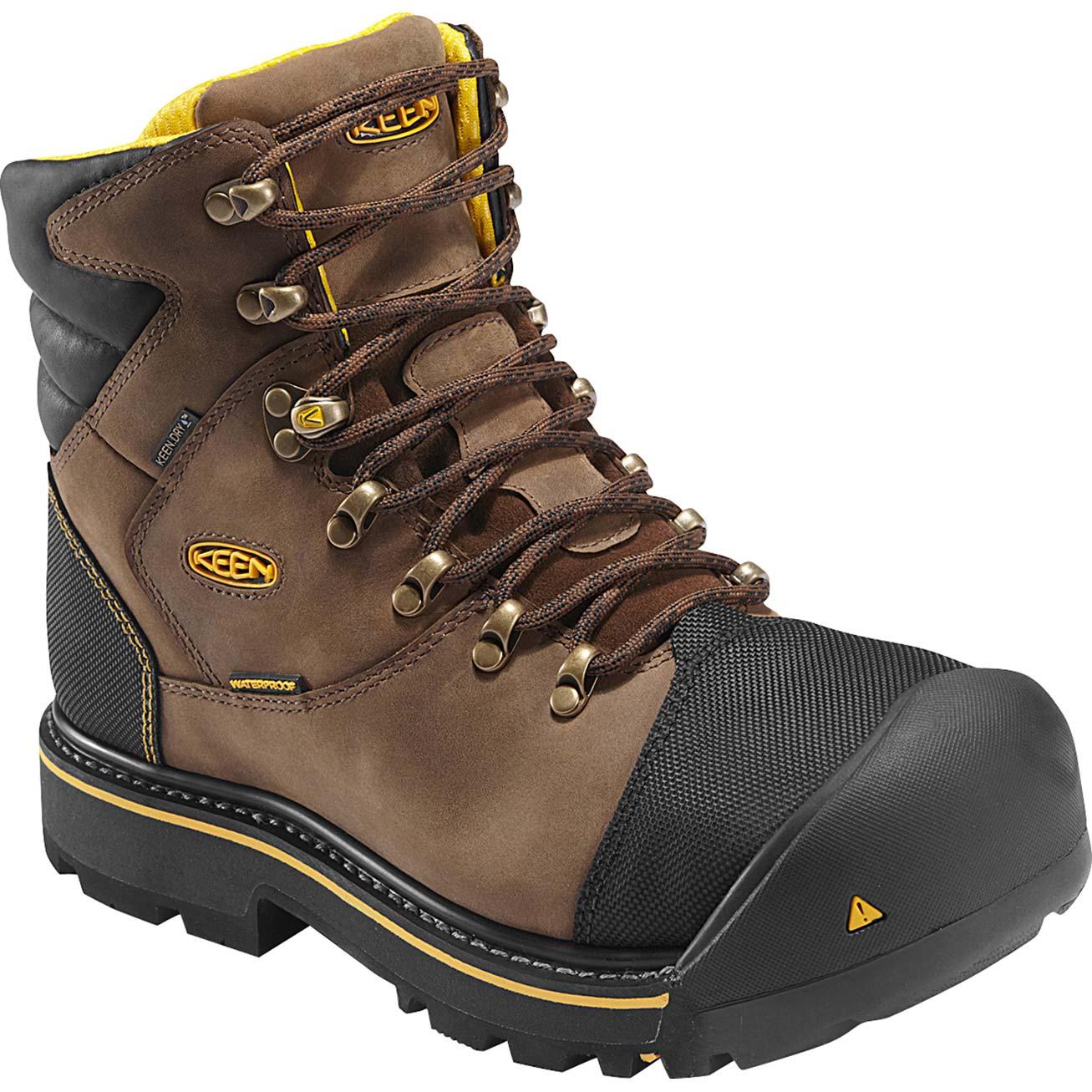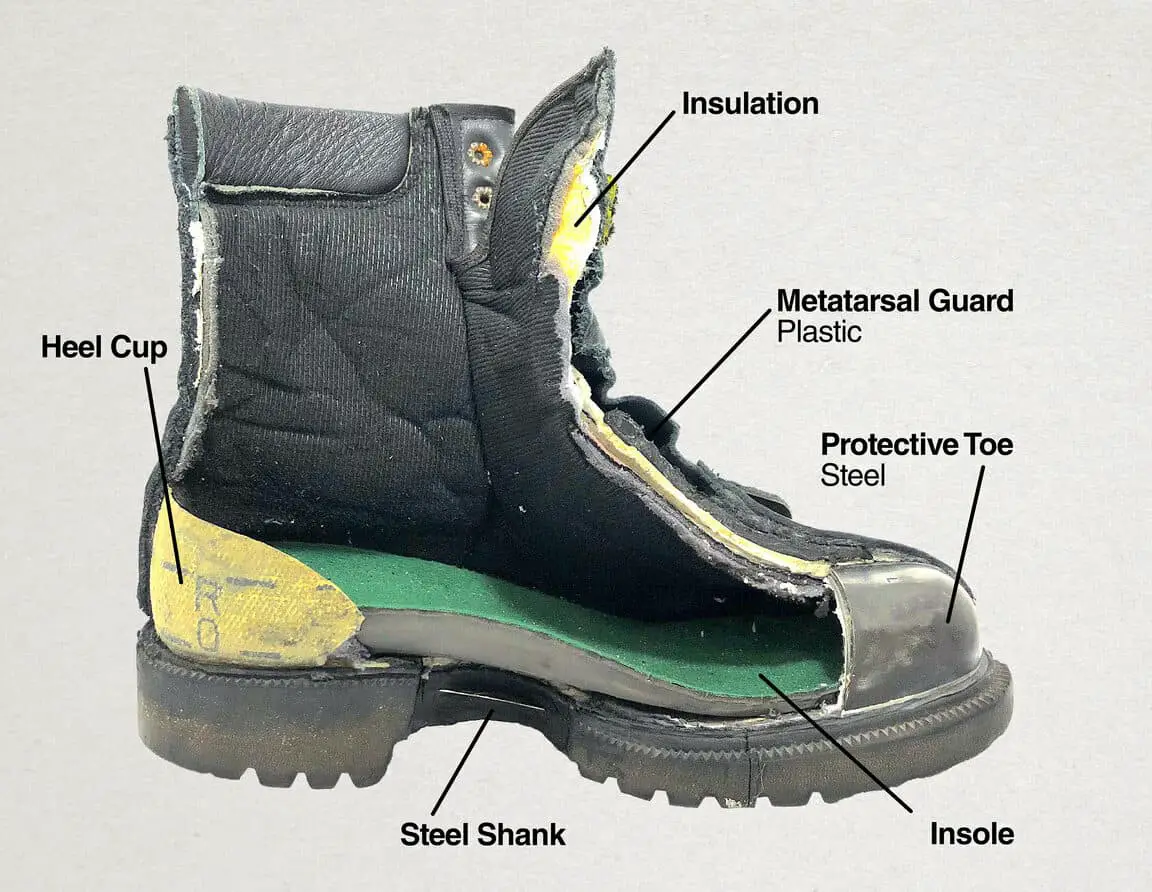Protecting Your Feet on the Job Site
In hazardous work environments, foot injuries can be a significant risk. According to the Occupational Safety and Health Administration (OSHA), over 100,000 foot injuries occur annually in the United States alone. These injuries can result in costly medical bills, lost productivity, and even long-term disabilities. Wearing protective footwear is crucial to preventing these types of injuries. Steel toe or composite boots are essential components of personal protective equipment (PPE) in many industries, including construction, manufacturing, and warehousing. By choosing the right footwear for the job, workers can significantly reduce the risk of foot injuries and ensure a safe working environment.
What are Steel Toe Boots and How Do They Work?
Steel toe boots have been a staple in hazardous work environments for decades. The concept of steel toe boots dates back to the early 20th century, when workers in the manufacturing and construction industries needed protection from heavy objects and tools. Today, steel toe boots are a crucial component of personal protective equipment (PPE) in many industries. They work by featuring a steel cap or plate in the toe area, which provides a protective barrier against impact and compression. This barrier helps to prevent toe injuries, including crushing, bruising, and lacerations. Popular brands such as Timberland and Dr. Martens offer high-quality steel toe boots that meet or exceed industry safety standards. By choosing a reputable brand and following proper fitting and maintenance procedures, workers can ensure their steel toe boots provide optimal protection on the job site.
The Rise of Composite Boots: A Safer Alternative?
In recent years, composite boots have emerged as a newer, lighter, and more comfortable alternative to traditional steel toe boots. Composite boots are made from advanced materials such as carbon fiber, Kevlar, or fiberglass, which provide excellent protection without the added weight and stiffness of steel. This makes them an attractive option for workers who require protective footwear but also need to move quickly and easily on the job site. Composite boots also offer improved flexibility, allowing for a greater range of motion and reduced fatigue. Additionally, many composite boots are designed to be more breathable and moisture-wicking, keeping feet cool and dry in hot or humid environments. As a result, composite boots are becoming increasingly popular in industries where workers need a high level of protection without sacrificing comfort or mobility. When considering steel toe or composite boots, it’s essential to weigh the benefits of each option and choose the one that best fits your specific job requirements and personal preferences.
How to Choose Between Steel Toe and Composite Boots
When deciding between steel toe and composite boots, it’s essential to consider several factors to ensure you choose the right footwear for your job. Here’s a step-by-step guide to help you make an informed decision:
1. Job Requirements: Identify the specific hazards present in your work environment. If you work in an industry where heavy objects are frequently dropped or there’s a risk of crushing, steel toe boots may be the better choice. However, if you need to move quickly or work in a fast-paced environment, composite boots could be a better fit.
2. Personal Comfort: Consider your personal comfort level and preferences. If you’re willing to sacrifice some comfort for added protection, steel toe boots might be the way to go. On the other hand, if you prioritize comfort and flexibility, composite boots could be the better option.
3. Budget: Determine your budget for the boots. Steel toe boots are often more affordable than composite boots, but the latter may be worth the investment if you prioritize comfort and flexibility.
4. Industry Standards: Check the industry standards and regulations for your specific job or industry. Some industries may require steel toe boots, while others may allow composite boots.
By considering these factors, you can make an informed decision between steel toe and composite boots, ensuring you choose the right footwear for your job and stay safe on the job site.
Comparing the Safety Features of Steel Toe and Composite Boots
When it comes to safety features, both steel toe and composite boots have their strengths and weaknesses. Here’s a comparison of the safety features of these two types of boots:
Impact Resistance: Steel toe boots are known for their excellent impact resistance, thanks to the sturdy steel toe cap that protects the toes from heavy objects. Composite boots, on the other hand, use advanced materials like carbon fiber or Kevlar to provide impact resistance, although it may not be as robust as steel toe boots.
Compression Resistance: Both steel toe and composite boots are designed to withstand compression forces, such as those encountered in heavy industry or construction work. However, steel toe boots tend to be more effective in this regard, thanks to their rigid steel toe cap.
Electrical Hazard Protection: Composite boots often have an edge when it comes to electrical hazard protection, as they are less conductive than steel toe boots. This makes them a better choice for workers in industries where electrical hazards are present.
Slip Resistance: Both types of boots can provide excellent slip resistance, depending on the outsole material and tread pattern used. However, some composite boots may offer better slip resistance due to their lighter and more flexible design.
Ultimately, the choice between steel toe and composite boots depends on the specific hazards present in your work environment. By understanding the safety features of each type of boot, you can make an informed decision and choose the right footwear for your job.
What to Look for in a Composite Boot
When purchasing a composite boot, there are several key factors to consider to ensure you get the right footwear for your job. Here are some tips to help you make an informed decision:
Type of Composite Material: Look for boots made with advanced composite materials like carbon fiber, Kevlar, or fiberglass. These materials provide excellent strength-to-weight ratios, making them ideal for composite boots.
Weight and Flexibility: Composite boots are known for their lightness and flexibility. Look for boots that offer a comfortable weight and flexibility, making it easier to move around on the job site.
Certifications and Ratings: Check for certifications like ASTM or CSA, which ensure the boot meets certain safety standards. Also, look for ratings like EH (electrical hazard) or SD (static dissipative) to ensure the boot provides the necessary protection for your job.
Slip Resistance: A good composite boot should provide excellent slip resistance. Look for boots with slip-resistant outsoles and tread patterns designed to grip various surfaces.
Breathability and Comfort: Composite boots can be more breathable than steel toe boots, thanks to their lighter and more flexible design. Look for boots with breathable materials and comfortable insoles to keep your feet happy all day.
By considering these factors, you can find a composite boot that meets your specific needs and provides the protection and comfort you need to get the job done.
Real-Life Examples: When to Choose Steel Toe or Composite Boots
In the real world, the choice between steel toe and composite boots often depends on the specific job requirements and work environment. Here are some examples of when to choose each type of boot:
Steel Toe Boots:
Construction sites, heavy industry, and manufacturing facilities often require steel toe boots due to the high risk of heavy objects falling or rolling onto the feet. Steel toe boots provide excellent impact resistance and compression protection, making them ideal for these hazardous environments.
In addition, jobs that involve working with heavy machinery, such as forklift operators or warehouse workers, may also require steel toe boots for added protection.
Composite Boots:
On the other hand, composite boots are often preferred in jobs that require a high level of flexibility and comfort, such as warehouse workers who need to move quickly and easily around the facility.
Electrical workers, linemen, and others who work with electrical systems may also prefer composite boots due to their non-conductive properties, which reduce the risk of electrical shock.
In general, composite boots are a better choice for jobs that require a high level of agility and comfort, while steel toe boots are better suited for jobs that require maximum protection and impact resistance.
By understanding the specific requirements of your job and work environment, you can make an informed decision about which type of boot is best for you.
Conclusion: Making an Informed Decision
In conclusion, choosing the right footwear for your job is a critical decision that can have a significant impact on your safety and comfort. Both steel toe and composite boots have their advantages and disadvantages, and understanding the specific requirements of your job and work environment is key to making an informed decision.
By considering factors such as job requirements, personal comfort, and budget, and by understanding the safety features and benefits of each type of boot, you can choose the right footwear for your needs. Whether you opt for the tried-and-true protection of steel toe boots or the innovative comfort of composite boots, the most important thing is to prioritize your safety and well-being on the job site.
Remember, steel toe or composite boots are not just a necessary evil, but a vital investment in your safety and success. By choosing the right footwear, you can reduce the risk of foot injuries, improve your productivity, and enjoy a more comfortable and confident work experience.
So, take the time to research, compare, and consider your options carefully. Your feet – and your employer – will thank you.






